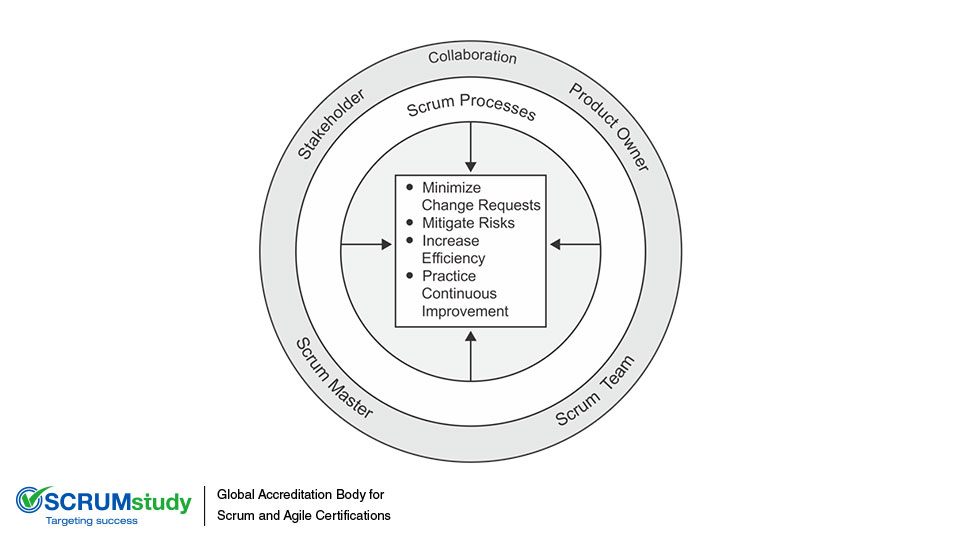What are the key benefits of obtaining an Agile Master Certification?
Posted bySCRUMstudy® on July 24, 2024
Categories Agile Agile Frameworks Product Development Product Owner Scaling Scrum Scrum Scrum Guide Scrum Master
The Agile Master Certification is a prestigious credential that signifies a high level of proficiency in Agile methodologies and practices. This certification is designed for experienced Agile practitioners who have demonstrated advanced knowledge and leadership in implementing Agile frameworks such as Scrum, Kanban, and Lean. Earning the Agile Master Certification involves rigorous training and assessment, ensuring that certified professionals can effectively manage complex projects, facilitate Agile transformations, and foster a culture of continuous improvement within their organizations.
Agile Master Collaboration refers to the collaborative efforts facilitated by an Agile Master (often synonymous with a Scrum Master) to foster effective communication, teamwork, and synergy within agile teams.
Collaboration in Scrum refers to the Scrum Core Team working together and interfacing with the stakeholders to create and validate the deliverables of the project to meet the goals outlined in the Project Vision. It is important to note the difference between cooperation and collaboration here. Cooperation occurs when the work product consists of the sum of the work efforts of various people on a team. Collaboration occurs when a team works together to play off each other’s inputs to produce something greater.
The core dimensions of collaborative work are as follows:
- Awareness—Individuals working together need to be aware of each other’s work.
- Articulation—Collaborating individuals must partition work into units, divide the units among team members, and then after the work is done, reintegrate it.
- Appropriation—Adapting technology to one’s own situation; the technology may be used in a manner completely different than expected by the designers.
Benefits of Collaboration in Scrum Projects
The Agile Manifesto (Fowler & Highsmith, 2001) stresses “customer collaboration over contract negotiation.” Thus, the Scrum framework adopts an approach in which the Scrum Core Team members (Product Owner, Scrum Master, and Scrum Team), collaborate with each other and the stakeholders to create the deliverables that provide greatest possible value to the customer. This collaboration occurs throughout the project.
Collaboration ensures that the following project benefits are realized:
- The need for changes due to poorly clarified requirements is minimized. For example, during the Create Project Vision, Develop Epic(s), and Create Prioritized Product Backlog processes, the Product Owner collaborates with stakeholders to create the Project Vision, Epic(s), and Prioritized Product Backlog, respectively. This will ensure that there is clarity among Scrum Core Team members on the work that is required to complete the project. The Scrum Team collaborates continuously with the Product Owner and stakeholders through a transparent Prioritized Product Backlog to create the project deliverables. The processes Conduct Daily Standup, Groom Prioritized Product Backlog, and Retrospect Sprint provide scope to the Scrum Core Team members to discuss what has been done and collaborate on what needs to be done. Thus the number of Change Requests from the customer and rework is minimized.
- Risks are identified and dealt with efficiently. For example, risks to the project are identified and assessed in the Develop Epic(s), Create Deliverables, and Conduct Daily Standup processes by the Scrum Core Team members. The Scrum meeting tools such as the Daily Standup Meeting, Sprint Planning Meeting, Prioritized Product Backlog Review Meeting, and so on provide opportunities to the team to not only identify and assess risks, but also to implement risk responses to high-priority risks.
- True potential of the team is realized. For example, the Conduct Daily Standup process provides scope for the Scrum Team to collaborate and understand the strengths and weaknesses of its members. If a team member has missed a task deadline, the Scrum Team members align themselves collaboratively to complete the task and meet the targets agreed to for completing the Sprint.
- Continuous improvement is ensured through lessons learned. For example, the Scrum Team uses the Retrospect Sprint process to identify what went well and what did not go well in the previous Sprint. This provides an opportunity to the Scrum Master to work with the team to rework and improve the team for the next scheduled Sprint. This will also ensure that collaboration is even more effective in the next Sprint.

